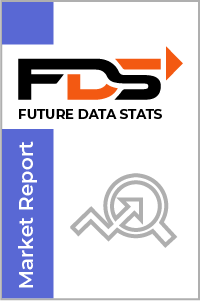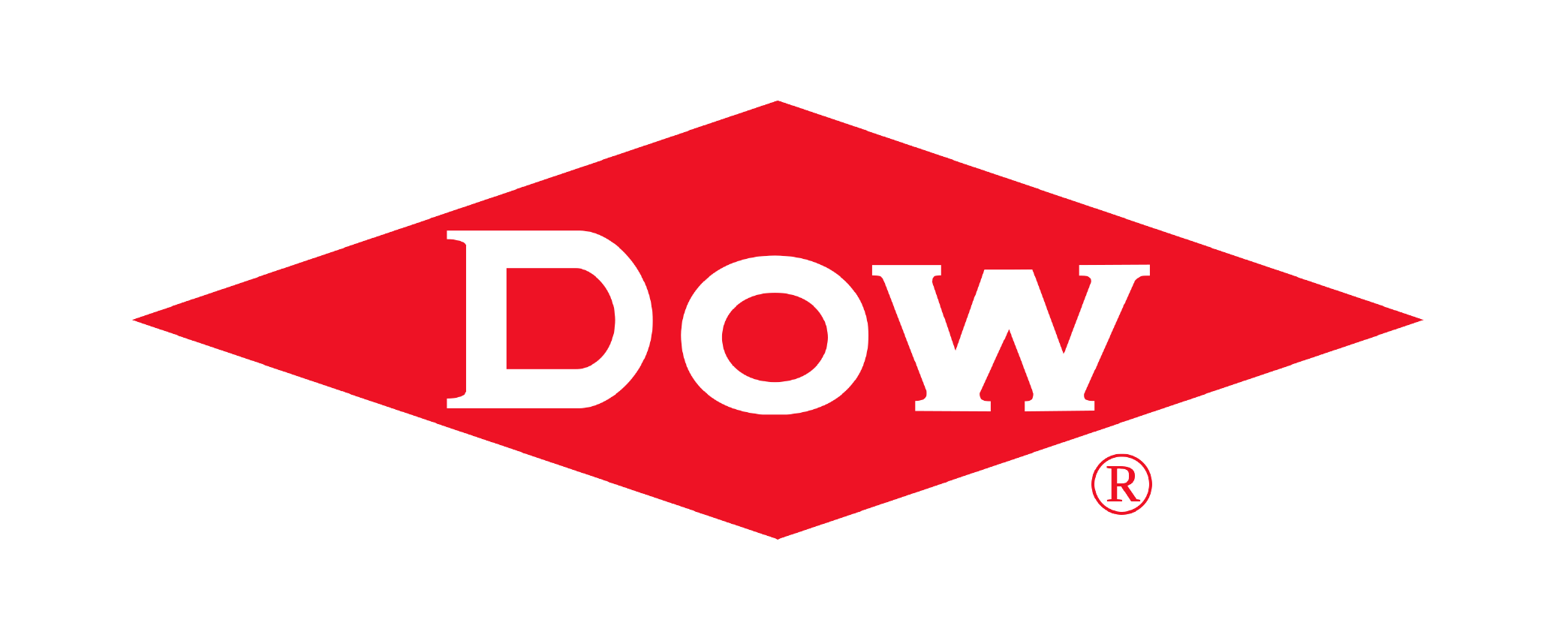The global E-commerce Automation Market size was valued at USD 10.5 Billion in 2024 and is projected to expand at a compound annual growth rate (CAGR) of 13.5% during the forecast period, reaching a value of USD 28.5 Billion by 2032.
The "E-commerce Automation Market Research Report" from Future Data Stats offers a comprehensive analysis of the market landscape, leveraging historical data from 2021 to 2023 to highlight significant trends and growth patterns. With 2024 as a baseline year, the report examines consumer behaviors, competitive dynamics, and regulatory influences shaping the industry. Going beyond basic analysis, it provides a well-researched forecast for 2025 to 2033. Utilizing advanced data analysis techniques, the report outlines the market's growth path, identifies emerging opportunities, and anticipates potential challenges, equipping stakeholders with essential insights to navigate the evolving market environment effectively.
MARKET OVERVIEW:
E-commerce automation is the process of using software tools to streamline and simplify repetitive tasks in online retail operations. It replaces manual processes like inventory updates, order tracking, and customer communication with automated workflows, helping businesses operate more efficiently. This allows teams to focus on strategy, customer service, and growth rather than day-to-day tasks. In the market context, e-commerce automation supports faster decision-making and improves customer experience by ensuring timely order fulfillment and accurate stock management. Companies adopting automation tools gain a competitive edge by reducing errors, cutting operational costs, and adapting quickly to consumer demands.
MARKET DYNAMICS:
E-commerce automation is reshaping the way businesses operate, offering streamlined solutions for inventory management, order processing, and customer engagement. Companies are increasingly adopting AI-driven tools and machine learning algorithms to enhance operational efficiency and reduce manual tasks. The integration of chatbots, automated marketing campaigns, and real-time analytics is allowing retailers to make faster, data-backed decisions, which ultimately improves the customer experience and boosts profitability. Looking ahead, the market is set to expand further as new technologies continue to emerge. Innovations such as predictive analytics, personalized shopping experiences, and cross-platform integration are expected to drive growth across various sectors. Small and medium-sized businesses are also entering the space, leveraging automation to compete with larger players. As consumer expectations evolve, businesses that invest in scalable and flexible automation tools will likely gain a competitive edge in the digital retail landscape.
First, the rapid growth of online shopping has spurred businesses to adopt automation solutions, streamlining their operations for efficiency and scalability. Companies increasingly seek to enhance customer experiences through personalized marketing and faster delivery systems. Additionally, advancements in artificial intelligence and machine learning enable businesses to analyze vast amounts of data, improving decision-making processes and inventory management. As a result, retailers can respond swiftly to market trends and consumer demands, solidifying their competitive edge. High initial investment costs and the complexity of integrating new technologies deter some businesses from fully embracing automation. However, significant opportunities lie in addressing these challenges. As technology becomes more affordable and user-friendly, smaller enterprises can leverage automation to enhance their operations. Moreover, the increasing emphasis on sustainability presents a chance for e-commerce platforms to implement eco-friendly practices through automation, appealing to a growing base of environmentally conscious consumers. This alignment of innovation and responsibility can drive further growth in the sector.
E-COMMERCE AUTOMATION MARKET SEGMENTATION ANALYSIS
BY COMPONENT:
Organizations use both software and services to implement automation strategies. The software segment includes platforms that control inventory, sales processes, and marketing tasks through a unified dashboard. These systems often come with customizable modules that support the unique needs of different businesses. Services play a vital role in ensuring successful deployment and maintenance. They cover everything from initial consultations to technical support and training. Managed services also help businesses update their systems without downtime or disruption, which is crucial in fast-paced online markets.
The combination of powerful software and professional services ensures long-term success. As companies aim to grow and scale efficiently, they depend on reliable components that align with their business models. This demand will continue to drive innovation and partnerships within the component segment of the market.
BY DEPLOYMENT TYPE:
Cloud-based solutions dominate the deployment landscape due to their scalability and accessibility. Businesses can operate without major infrastructure investments, accessing features on demand. This flexibility is especially attractive to growing enterprises and seasonal retailers. On-premise deployment still holds relevance for companies needing more control or operating in regulated environments. These setups offer tighter integration with existing systems and provide enhanced data security. Some businesses choose hybrid models to balance flexibility with security.
Deployment models continue to evolve as businesses weigh cost, performance, and data needs. While cloud adoption accelerates, industry-specific concerns ensure on-premise options remain viable. Companies will choose platforms based on their operational priorities and risk management policies.
BY APPLICATION:
Inventory and order management tools help avoid stockouts and overstock situations. Automation ensures accurate tracking of products, manages reorders, and improves warehouse operations. This leads to better customer satisfaction and lower operational costs. Marketing and CRM applications use data insights to personalize communication and enhance engagement. Automation enables timely email campaigns, lead scoring, and targeted promotions. These systems nurture customer relationships and convert leads into loyal buyers.
Shipping, refunds, and analytics tools ensure smooth post-purchase experiences. Businesses benefit from accurate delivery estimates, fast returns processing, and meaningful reports. Automation here improves trust, optimizes logistics, and helps identify trends for future strategies.
BY ENTERPRISE SIZE:
Large enterprises adopt automation to manage complex operations across multiple geographies. Their scale demands robust systems that handle thousands of transactions, marketing campaigns, and logistics processes simultaneously. Small and medium enterprises (SMEs) use automation to compete effectively with larger players. These tools allow them to deliver personalized services, manage customer relationships, and scale quickly without significant staffing costs. Affordability and ease of use are key for SMEs entering this space.
Both segments focus on cost efficiency and improved performance. While their approaches differ in complexity and scale, the need for automation remains universal. Tools tailored to enterprise size ensure every business gains from improved workflows and reduced errors.
BY END-USER INDUSTRY:
Retail and consumer goods companies are leading adopters, using automation to handle high-volume sales and fluctuating demand. These tools help manage catalogs, run dynamic promotions, and fulfill orders efficiently. Healthcare, electronics, and automotive sectors use automation for compliance tracking, stock management, and personalized service delivery. These industries benefit from reduced turnaround times and better customer interactions.
Other sectors, including food, beauty, books, and manufacturing, also deploy automation to improve supply chains and digital presence. Each vertical customizes tools to its unique challenges, but all share a commitment to delivering fast, reliable, and engaging e-commerce experiences.
REGIONAL ANALYSIS:
In North America, rapid technological adoption and a strong presence of e-commerce giants have fueled market expansion. Businesses increasingly implement automation tools to streamline operations, improve customer experiences, and reduce manual labor. Europe also reflects robust growth, driven by rising digitalization and government support for online commerce infrastructure. Germany, the UK, and France lead the regional market, focusing on automating order management, inventory control, and customer service processes.
Meanwhile, the Asia Pacific region is experiencing accelerated growth, thanks to the surge in online retail activity, especially in countries like China, India, and Japan. Increasing smartphone penetration and internet access have encouraged small and medium enterprises to adopt automation platforms. In Latin America, growing online consumer demand and improvements in digital payment systems are supporting the market. The Middle East and Africa are gradually catching up, with rising investments in digital ecosystems and a shift in consumer behavior toward online shopping, creating new opportunities for automation across the e-commerce sector.
MERGERS & ACQUISITIONS:
- In July 2024: Oracle acquired "Blue Yonder" (previously announced but finalized in 2024) to strengthen supply chain automation.
- In July 2024: Square (Block Inc.) launched AI-powered inventory automation for small e-commerce businesses.
- In August 2024: WooCommerce introduced automated dynamic pricing tools powered by machine learning.
- In August 2024: Target expanded its automated micro-fulfillment centers in partnership with Symbotic.
- In September 2024: Shopify acquired "Rokt" to enhance AI-driven personalized marketing automation.
- In September 2024: Amazon launched "AutoList", an AI tool for automated product listing optimization.
- In October 2024: Etsy acquired "Blackbird.ai" to automate fraud detection and seller analytics.
- In October 2024: Wix.com introduced AI-powered workflow automation for online store management.
- In November 2024: PrestaShop partnered with "Aritic" to offer advanced marketing automation plugins.
- In November 2024: Flipkart launched AI-driven chatbot automation for customer support.
- In December 2024: SAP acquired "Celonis" (process mining & automation) to enhance e-commerce logistics automation.
- In December 2024: TikTok Shop introduced automated dropshipping tools for merchants.
KEY MARKET PLAYERS:
- Shopify Inc.
- BigCommerce Holdings, Inc.
- Adobe Inc. (Magento)
- Salesforce, Inc.
- SAP SE
- Oracle Corporation
- Wix.com Ltd.
- Mailchimp
- HubSpot, Inc.
- ActiveCampaign, LLC
- Zoho Corporation
- Klaviyo, Inc.
- LimeSpot Solutions Inc.
- NetSuite Inc.
- Squarespace, Inc.
TABLE OF CONTENT
1. GLOBAL E-COMMERCE AUTOMATION MARKET–REPORT OVERVIEW 17
1.1. SCOPE OF THE REPORT 18
1.2. MARKET SEGMENT ANALYSIS 19
1.3. REGULATORY SCENARIO BY REGION/COUNTRY 20
1.4. MARKET INVESTMENT SCENARIO STRATEGIC 20
1.5. MARKET ANALYSIS BY COMPONENT (USD MILLION) 21
1.5.1 GLOBAL E-COMMERCE AUTOMATION MARKET SHARE BY COMPONENT (2024-2031) 21
1.5.2 SOFTWARE 21
1.5.3 SERVICES 21
1.6. MARKET ANALYSIS BY DEPLOYMENT TYPE (USD MILLION) 22
1.6.1 GLOBAL E-COMMERCE AUTOMATION MARKET SHARE BY DEPLOYMENT TYPE (2024-2031) 22
1.6.2 CLOUD-BASED 22
1.6.3 ON-PREMISE 22
1.7. MARKET ANALYSIS BY APPLICATION (USD MILLION) 23
1.7.1 GLOBAL E-COMMERCE AUTOMATION MARKET SHARE BY APPLICATION (2024-2031) 23
1.7.2 INVENTORY & ORDER MANAGEMENT 23
1.7.3 MARKETING AUTOMATION 23
1.7.4 CUSTOMER RELATIONSHIP MANAGEMENT (CRM) 23
1.7.5 SALES & LEAD MANAGEMENT 23
1.7.6 PRICING & PROMOTIONS 23
1.7.7 SHIPPING & DELIVERY AUTOMATION 23
1.7.8 RETURNS & REFUNDS 24
1.7.9 ANALYTICS & REPORTING 24
1.8. MARKET ANALYSIS BY ENTERPRISE SIZE (USD MILLION) 25
1.8.1 GLOBAL E-COMMERCE AUTOMATION MARKET SHARE BY ENTERPRISE SIZE (2024-2031) 25
1.8.2 LARGE ENTERPRISES 25
1.8.3 SMALL & MEDIUM ENTERPRISES (SMES) 25
1.9. MARKET ANALYSIS BY END-USER INDUSTRY (USD MILLION) 26
1.9.1 GLOBAL E-COMMERCE AUTOMATION MARKET SHARE BY END-USER INDUSTRY (2024-2031) 26
1.9.2 RETAIL & CONSUMER GOODS 26
1.9.3 HEALTHCARE & PHARMACEUTICALS 26
1.9.4 AUTOMOTIVE 26
1.9.5 ELECTRONICS & APPLIANCES 26
1.9.6 BEAUTY & PERSONAL CARE 26
1.9.7 BOOKS & MEDIA 26
1.9.8 FOOD & BEVERAGES 27
1.9.9 INDUSTRIAL & MANUFACTURING 27
1.9.10 OTHERS 27
2. DRIVER RESTRAINT CHALLENGE AND OPPORTUNITIES OF E-COMMERCE AUTOMATION MARKET 28
2.1. DRIVER, RESTRAINT, CHALLENGE AND OPPORTUNITIES ANALYSIS 28
2.1.1 MARKET DRIVER ANALYSIS 29
2.1.2 MARKET RESTRAINT ANALYSIS 29
2.1.3 MARKET OPPORTUNITY ANALYSIS 29
2.1.4 MARKET CHALLENGE ANALYSIS 29
3. GLOBAL GROWTH TRENDS 30
3.1. INDUSTRY TRENDS 30
3.1.1 SWOT ANALYSIS 30
3.1.1.1 Strengths 31
3.1.1.2 Weaknesses 31
3.1.1.3 Opportunities 31
3.1.1.4 Threats 31
3.1.2 PESTEL ANALYSIS 32
3.1.2.1 Political Landscape 33
3.1.2.2 Economic Landscape 33
3.1.2.3 Social Landscape 33
3.1.2.4 Technological Landscape 33
3.1.2.5 Environmental Landscape 34
3.1.2.6 Legal Landscape 34
3.1.3 PORTER’S FIVE FORCES ANALYSIS 35
3.1.3.1 Bargaining Power of Suppliers 36
3.1.3.2 Bargaining Power of Buyers 36
3.1.3.3 Threat of Substitute 36
3.1.3.4 Threat of New Entrant 36
3.1.3.5 Competitive Rivalry 37
3.2. VALUE CHAIN ANALYSIS 38
3.3. INDUSTRY TRENDS BY REGION 39
4. POST COVID ANALYSIS 40
4.1. COVID-19 IMPACT ANALYSIS 40
4.2. COVID V ANALYSIS 41
4.3. COVID U ANALYSIS 41
4.4. COVID L ANALYSIS 41
4.5. COVID W ANALYSIS 41
5. COMPETITIVE LANDSCAPE 42
5.1. GLOBAL E-COMMERCE AUTOMATION MARKET, SALES AREA, PRODUCT TYPE 42
5.2. MERGERS & ACQUISITIONS, PARTNERSHIPS, PRODUCT LAUNCH, AND COLLABORATION IN GLOBAL E-COMMERCE AUTOMATION MARKET 43
5.3. COMPANY LIST IN THE GLOBAL E-COMMERCE AUTOMATION MARKET 44
5.4. STRATEGY FRAMEWORK 45
5.5. TOP COMPANIES MARKET SHARE (%), 2024 46
6. EXCEUTIVE SUMMARY 47
7. GLOBAL E-COMMERCE AUTOMATION MARKET FORECAST, 2020-2031, (USD MILLION) 48
7.1. GLOBAL E-COMMERCE AUTOMATION REVENUE AND MARKET SHARE BY REGIONS 48
7.2. GLOBAL E-COMMERCE AUTOMATION MARKET AND MARKET SHARE BY REGION (2020-2025) 52
7.3. GLOBAL E-COMMERCE AUTOMATION MARKET AND MARKET SHARE BY REGION (2026-2031) 53
7.3.1.1 North America 57
7.3.1.2 Europe 57
7.3.1.3 Asia Pacific 57
7.3.1.4 Latin America 57
7.3.1.5 Middle East & Africa 57
8. NORTH AMERICA E-COMMERCE AUTOMATION MARKET ANALYSIS BY COUNTRIES, (USD MILLION) 68
8.1. NORTH AMERICA E-COMMERCE AUTOMATION REVENUE AND MARKET SHARE BY COUNTRIES 68
8.2. NORTH AMERICA E-COMMERCE AUTOMATION MARKET AND MARKET SHARE BY COUNTRY (2020-2025) 69
8.3. NORTH AMERICA E-COMMERCE AUTOMATION MARKET AND MARKET SHARE BY COUNTRY (2026-2031) 71
8.3.1.1 United States 72
8.3.1.2 Canada 72
8.3.1.3 Mexico 72
9. EUROPE E-COMMERCE AUTOMATION MARKET ANALYSIS BY COUNTRIES, (USD MILLION) 79
9.1. EUROPE E-COMMERCE AUTOMATION REVENUE AND MARKET SHARE BY COUNTRIES 79
9.2. EUROPE E-COMMERCE AUTOMATION MARKET AND MARKET SHARE BY COUNTRY (USD MILLION) (2020-2025) 80
9.3. EUROPE E-COMMERCE AUTOMATION MARKET AND MARKET SHARE BY COUNTRY (USD MILLION) (2026-2031) 84
9.3.1.1 United Kingdom 87
9.3.1.2 Germany 87
9.3.1.3 France 87
9.3.1.4 Spain 87
9.3.1.5 Italy 87
9.3.1.6 Rest of Europe 87
10. ASIA PACIFIC E-COMMERCE AUTOMATION MARKET ANALYSIS BY COUNTRIES, (USD MILLION), (2020-2031) 100
10.1. ASIA PACIFIC E-COMMERCE AUTOMATION REVENUE AND MARKET SHARE BY COUNTRIES 100
10.2. ASIA PACIFIC E-COMMERCE AUTOMATION MARKET AND MARKET SHARE BY COUNTRY (USD MILLION) (2020-2025) 101
10.3. ASIA PACIFIC E-COMMERCE AUTOMATION MARKET AND MARKET SHARE BY COUNTRY (USD MILLION) (2026-2031) 105
10.3.1.1 China 108
10.3.1.2 India 108
10.3.1.3 Japan 108
10.3.1.4 Australia 108
10.3.1.5 South Korea 108
10.3.1.6 Rest of Asia Pacific 108
11. MIDDLE EAST AND AFRICA E-COMMERCE AUTOMATION MARKET ANALYSIS BY COUNTRIES, (USD MILLION) 121
11.1. MIDDLE EAST AND AFRICA E-COMMERCE AUTOMATION REVENUE AND MARKET SHARE BY COUNTRIES 121
11.2. MIDDLE EAST & AFRICA E-COMMERCE AUTOMATION MARKET AND MARKET SHARE BY COUNTRY (USD MILLION) (2020-2025) 122
11.3. MIDDLE EAST & AFRICA E-COMMERCE AUTOMATION MARKET AND MARKET SHARE BY COUNTRY, (USD MILLION) (2026-2031) 124
11.3.1.1 Saudi Arabia 125
11.3.1.2 South Africa 125
11.3.1.3 Rest of MEA 125
12. LATIN AMERICA E-COMMERCE AUTOMATION MARKET ANALYSIS BY COUNTRIES, (USD MILLION) 132
12.1. LATIN AMERICA E-COMMERCE AUTOMATION REVENUE AND MARKET SHARE BY COUNTRIES 132
12.2. LATIN AMERICA E-COMMERCE AUTOMATION MARKET AND MARKET SHARE BY COUNTRY (USD MILLION) (2020-2025) 133
12.3. LATIN AMERICA E-COMMERCE AUTOMATION MARKET AND MARKET SHARE BY COUNTRY (USD MILLION) (2026-2031) 135
12.3.1.1 Brazil 136
12.3.1.2 Argentina 136
12.3.1.3 Rest of Latin America 136
13. GLOBAL E-COMMERCE AUTOMATION MARKET SEGMENT BY COMPONENT, (USD MILLION) 143
13.1. GLOBAL E-COMMERCE AUTOMATION MARKET AND MARKET SHARE BY COMPONENT (2020-2025) 143
13.2. GLOBAL E-COMMERCE AUTOMATION MARKET AND MARKET SHARE BY COMPONENT (2026-2031) 144
13.3. NORTH AMERICA E-COMMERCE AUTOMATION MARKET AND MARKET SHARE BY COMPONENT, (2020-2025) 145
13.4. NORTH AMERICA E-COMMERCE AUTOMATION MARKET AND MARKET SHARE BY COMPONENT (2026-2031) 146
13.5. EUROPE E-COMMERCE AUTOMATION MARKET AND MARKET SHARE BY COMPONENT (2020-2025) 147
13.6. EUROPE E-COMMERCE AUTOMATION MARKET AND MARKET SHARE BY COMPONENT (2026-2031) 148
13.7. ASIA PACIFIC E-COMMERCE AUTOMATION MARKET AND MARKET SHARE BY COMPONENT (2020-2025) 149
13.8. ASIA PACIFIC E-COMMERCE AUTOMATION MARKET AND MARKET SHARE BY COMPONENT (2026-2031) 150
13.9. LATIN AMERICA E-COMMERCE AUTOMATION MARKET AND MARKET SHARE BY COMPONENT (2020-2025) 151
13.10. LATIN AMERICA E-COMMERCE AUTOMATION MARKET AND MARKET SHARE BY COMPONENT (2026-2031) 152
13.11. MIDDLE EAST AND AFRICA E-COMMERCE AUTOMATION MARKET AND MARKET SHARE BY COMPONENT (2020-2025) 153
13.12. MIDDLE EAST AND AFRICA E-COMMERCE AUTOMATION MARKET AND MARKET SHARE BY COMPONENT (2026-2031) 154
14. COMPANY PROFILES 155
14.1. SHOPIFY INC. 155
14.1.1 COMPANY DETAILS 155
14.1.2 FINANCIALS (USD MILLIONS) 156
14.1.3 PRODUCT SUMMARY 156
14.1.4 RECENT DEVELOPMENTS (MERGERS, ACQUISITION, LAUNCH & OTHERS) 156
14.2. BIGCOMMERCE HOLDINGS, INC. 157
14.3. ADOBE INC. (MAGENTO) 157
14.4. SALESFORCE, INC. 157
14.5. SAP SE 157
14.6. ORACLE CORPORATION 157
14.7. WIX.COM LTD. 157
14.8. MAILCHIMP 157
14.9. HUBSPOT, INC. 157
14.10. ACTIVECAMPAIGN, LLC 157
14.11. ZOHO CORPORATION 157
14.12. KLAVIYO, INC. 157
14.13. LIMESPOT SOLUTIONS INC. 157
14.14. NETSUITE INC. 157
14.15. SQUARESPACE, INC. 157
15. CONCLUSION 158
16. REFERENCE LINK 159
17. APPENDIX 160
17.1. METHODOLOGY 160
17.2. RESEARCH DATA SOURCE 161
17.2.1 SECONDARY DATA 161
17.2.2 KEY DATA FROM SECONDARY 162
17.2.3 PRIMARY DATA 163
17.2.4 KEY DATA FROM PRIMARY 163
17.2.5 INDUSTRY INSIGHT FROM PROFESSIONAL LEADERS 164
17.2.6 MARKET ESTIMATION 164
17.2.7 MARKET ESTIMATION: TOP-DOWN AND BOTTOM-UP APPROACH 165
17.2.8 LEGAL DISCLAIMER 165
18. FUTURE DATA STATS - MARKET RESEARCH & CONSULTING 166
LIST OF TABLES
TABLE 1. MARKET SEGMENT 19
TABLE 2. GLOBAL E-COMMERCE AUTOMATION MARKET GROWTH RATE BY COMPONENT (USD MILLION) (2024-2031) 21
TABLE 3. GLOBAL E-COMMERCE AUTOMATION MARKET GROWTH RATE BY DEPLOYMENT TYPE (USD MILLION) (2024-2031) 22
TABLE 4. GLOBAL E-COMMERCE AUTOMATION MARKET GROWTH RATE BY APPLICATION (USD MILLION) (2024-2031) 23
TABLE 5. GLOBAL E-COMMERCE AUTOMATION MARKET GROWTH RATE BY ENTERPRISE SIZE (USD MILLION) (2024-2031) 25
TABLE 6. GLOBAL E-COMMERCE AUTOMATION MARKET GROWTH RATE BY END-USER INDUSTRY (USD MILLION) (2024-2031) 26
TABLE 7. INDUSTRY TRENDS BY REGION 39
TABLE 8. GLOBAL E-COMMERCE AUTOMATION MARKET, SALES AREA, PRODUCT TYPE 42
TABLE 9. MERGERS & ACQUISITIONS, PARTNERSHIPS, PRODUCT LAUNCH, AND COLLABORATION IN GLOBAL E-COMMERCE AUTOMATION MARKET 43
TABLE 10. COMPANY LIST IN THE GLOBAL E-COMMERCE AUTOMATION MARKET 44
TABLE 11. GLOBAL E-COMMERCE AUTOMATION MARKET — MARKET SNAPSHOT & KEY BUYING CRITERIA, 2020 – 2031 47
TABLE 12. GLOBAL E-COMMERCE AUTOMATION MARKET, (USD MILLION) (2020-2025) 50
TABLE 13. GLOBAL E-COMMERCE AUTOMATION MARKET, (USD MILLION) (2026-2031) 51
TABLE 14. GLOBAL E-COMMERCE AUTOMATION MARKET BY REGION, USD MILLION (2020-2025) 52
TABLE 15. GLOBAL E-COMMERCE AUTOMATION MARKET SHARE BY REGION, (2020-2025) 53
TABLE 16. GLOBAL E-COMMERCE AUTOMATION MARKET BY REGION, USD MILLION (2026-2031) 54
TABLE 17. GLOBAL E-COMMERCE AUTOMATION MARKET SHARE BY REGION, (2026-2031) 56
TABLE 18. NORTH AMERICA E-COMMERCE AUTOMATION MARKET, (USD MILLION) (2020-2025) 58
TABLE 19. NORTH AMERICA E-COMMERCE AUTOMATION MARKET, (USD MILLION) (2026-2031) 59
TABLE 20. EUROPE E-COMMERCE AUTOMATION MARKET, (USD MILLION) (2020-2025) 60
TABLE 21. EUROPE E-COMMERCE AUTOMATION MARKET, (USD MILLION) (2026-2031) 61
TABLE 22. ASIA PACIFIC E-COMMERCE AUTOMATION MARKET, (USD MILLION) (2020-2025) 62
TABLE 23. ASIA PACIFIC E-COMMERCE AUTOMATION MARKET, (USD MILLION) (2026-2031) 63
TABLE 24. MIDDLE EAST AND AFRICA E-COMMERCE AUTOMATION MARKET, (USD MILLION) (2020-2025) 64
TABLE 25. MIDDLE EAST AND AFRICA E-COMMERCE AUTOMATION MARKET, (USD MILLION) (2026-2031) 65
TABLE 26. LATIN AMERICA E-COMMERCE AUTOMATION MARKET, (USD MILLION) (2020-2025) 66
TABLE 27. LATIN AMERICA E-COMMERCE AUTOMATION MARKET, (USD MILLION) (2026-2031) 67
TABLE 28. NORTH AMERICA E-COMMERCE AUTOMATION MARKET BY COUNTRY, (2020-2025) 69
TABLE 29. NORTH AMERICA E-COMMERCE AUTOMATION MARKET SHARE BY COUNTRY, (2020-2025) 70
TABLE 30. NORTH AMERICA E-COMMERCE AUTOMATION MARKET BY COUNTRY, (2026-2031) 71
TABLE 31. NORTH AMERICA E-COMMERCE AUTOMATION MARKET SHARE BY COUNTRY, (2026-2031) 72
TABLE 32. UNITED STATES E-COMMERCE AUTOMATION MARKET, (USD MILLION) (2020-2025) 72
TABLE 33. UNITED STATES E-COMMERCE AUTOMATION MARKET, (USD MILLION) (2026-2031) 74
TABLE 34. CANADA E-COMMERCE AUTOMATION MARKET, (USD MILLION) (2020-2025) 75
TABLE 35. CANADA E-COMMERCE AUTOMATION MARKET, (USD MILLION) (2026-2031) 76
TABLE 36. MEXICO E-COMMERCE AUTOMATION MARKET, (USD MILLION) (2020-2025) 77
TABLE 37. MEXICO E-COMMERCE AUTOMATION MARKET, (USD MILLION) (2026-2031) 78
TABLE 38. EUROPE E-COMMERCE AUTOMATION MARKET BY COUNTRY, (USD MILLION) (2020-2025) 80
TABLE 39. EUROPE E-COMMERCE AUTOMATION MARKET SHARE BY COUNTRY, (USD MILLION) (2020-2025) 82
TABLE 40. EUROPE E-COMMERCE AUTOMATION MARKET BY COUNTRY, (USD MILLION) (2026-2031) 84
TABLE 41. EUROPE E-COMMERCE AUTOMATION MARKET SHARE BY COUNTRY, (USD MILLION) (2026-2031) 86
TABLE 42. UNITED KINGDOM E-COMMERCE AUTOMATION MARKET, (USD MILLION) (2020-2025) 88
TABLE 43. UNITED KINGDOM E-COMMERCE AUTOMATION MARKET, (USD MILLION) (2026-2031) 89
TABLE 44. GERMANY E-COMMERCE AUTOMATION MARKET, (USD MILLION) (2020-2025) 90
TABLE 45. GERMANY E-COMMERCE AUTOMATION MARKET, (USD MILLION) (2026-2031) 91
TABLE 46. FRANCE E-COMMERCE AUTOMATION MARKET, (USD MILLION) (2020-2025) 92
TABLE 47. FRANCE E-COMMERCE AUTOMATION MARKET, (USD MILLION) (2026-2031) 93
TABLE 48. SPAIN E-COMMERCE AUTOMATION MARKET, (USD MILLION) (2020-2025) 94
TABLE 49. SPAIN E-COMMERCE AUTOMATION MARKET, (USD MILLION) (2026-2031) 95
TABLE 50. ITALY E-COMMERCE AUTOMATION MARKET, (USD MILLION) (2020-2025) 96
TABLE 51. ITALY E-COMMERCE AUTOMATION MARKET, (USD MILLION) (2026-2031) 97
TABLE 52. REST OF EUROPE E-COMMERCE AUTOMATION MARKET, (USD MILLION) (2020-2025) 98
TABLE 53. REST OF EUROPE E-COMMERCE AUTOMATION MARKET, (USD MILLION) (2026-2031) 99
TABLE 54. ASIA PACIFIC E-COMMERCE AUTOMATION MARKET BY COUNTRY, (USD MILLION) (2020-2025) 101
TABLE 55. ASIA PACIFIC E-COMMERCE AUTOMATION MARKET SHARE BY COUNTRY, (%) (2020-2025) 103
TABLE 56. ASIA PACIFIC E-COMMERCE AUTOMATION MARKET BY COUNTRY, (2026-2031) 105
TABLE 57. ASIA PACIFIC E-COMMERCE AUTOMATION MARKET SHARE BY COUNTRY, (%) (2026-2031) 107
TABLE 58. CHINA E-COMMERCE AUTOMATION MARKET, (USD MILLION) (2020-2025) 109
TABLE 59. CHINA E-COMMERCE AUTOMATION MARKET, (USD MILLION) (2026-2031) 110
TABLE 60. INDIA E-COMMERCE AUTOMATION MARKET, (USD MILLION) (2020-2025) 111
TABLE 61. INDIA E-COMMERCE AUTOMATION MARKET, (USD MILLION) (2026-2031) 112
TABLE 62. JAPAN E-COMMERCE AUTOMATION MARKET, (USD MILLION) (2020-2025) 113
TABLE 63. JAPAN E-COMMERCE AUTOMATION MARKET, (USD MILLION) (2026-2031) 114
TABLE 64. AUSTRALIA E-COMMERCE AUTOMATION MARKET, (USD MILLION) (2020-2025) 115
TABLE 65. AUSTRALIA E-COMMERCE AUTOMATION MARKET, (USD MILLION) (2026-2031) 116
TABLE 66. SOUTH KOREA E-COMMERCE AUTOMATION MARKET, (USD MILLION) (2020-2025) 117
TABLE 67. SOUTH KOREA E-COMMERCE AUTOMATION MARKET, (USD MILLION) (2026-2031) 118
TABLE 68. REST OF ASIA PACIFIC E-COMMERCE AUTOMATION MARKET, (USD MILLION) (2020-2025) 119
TABLE 69. REST OF ASIA PACIFIC E-COMMERCE AUTOMATION MARKET, (USD MILLION) (2026-2031) 120
TABLE 70. MIDDLE EAST & AFRICA E-COMMERCE AUTOMATION MARKET BY COUNTRY, (USD MILLION) (2020-2025) 122
TABLE 71. MIDDLE EAST & AFRICA E-COMMERCE AUTOMATION MARKET SHARE BY COUNTRY, (2020-2025) 123
TABLE 72. MIDDLE EAST & AFRICA E-COMMERCE AUTOMATION MARKET BY COUNTRY, (2026-2031) 124
TABLE 73. MIDDLE EAST & AFRICA E-COMMERCE AUTOMATION MARKET SHARE BY COUNTRY, (2026-2031) 125
TABLE 74. SAUDI ARABIA E-COMMERCE AUTOMATION MARKET, (USD MILLION) (2020-2025) 126
TABLE 75. SAUDI ARABIA E-COMMERCE AUTOMATION MARKET, (USD MILLION) (2026-2031) 127
TABLE 76. SOUTH AFRICA E-COMMERCE AUTOMATION MARKET, (USD MILLION) (2020-2025) 128
TABLE 77. SOUTH AFRICA E-COMMERCE AUTOMATION MARKET, (USD MILLION) (2026-2031) 129
TABLE 78. REST OF MEA E-COMMERCE AUTOMATION MARKET, (USD MILLION) (2020-2025) 130
TABLE 79. REST OF MEA E-COMMERCE AUTOMATION MARKET, (USD MILLION) (2026-2031) 131
TABLE 80. LATIN AMERICA E-COMMERCE AUTOMATION MARKET BY COUNTRY, (USD MILLION) (2020-2025) 133
TABLE 81. LATIN AMERICA E-COMMERCE AUTOMATION MARKET SHARE BY COUNTRY, (%) (2020-2025) 134
TABLE 82. LATIN AMERICA E-COMMERCE AUTOMATION MARKET BY COUNTRY, (2026-2031) 135
TABLE 83. LATIN AMERICA E-COMMERCE AUTOMATION MARKET SHARE BY COUNTRY, (%) (2026-2031) 135
TABLE 84. BRAZIL E-COMMERCE AUTOMATION MARKET, (USD MILLION) (2020-2025) 136
TABLE 85. BRAZIL E-COMMERCE AUTOMATION MARKET, (USD MILLION) (2026-2031) 138
TABLE 86. ARGENTINA E-COMMERCE AUTOMATION MARKET, (USD MILLION) (2020-2025) 139
TABLE 87. ARGENTINA E-COMMERCE AUTOMATION MARKET, (USD MILLION) (2026-2031) 140
TABLE 88. REST OF LATIN AMERICA E-COMMERCE AUTOMATION MARKET, (USD MILLION) (2020-2025) 141
TABLE 89. REST OF LATIN AMERICA E-COMMERCE AUTOMATION MARKET, (USD MILLION) (2026-2031) 142
TABLE 90. GLOBAL E-COMMERCE AUTOMATION MARKET BY COMPONENT, USD MILLION (2020-2025) 143
TABLE 91. GLOBAL E-COMMERCE AUTOMATION MARKET BY COMPONENT, USD MILLION (2026-2031) 144
TABLE 92. NORTH AMERICA E-COMMERCE AUTOMATION MARKET BY COMPONENT, USD MILLION (2020-2025) 145
TABLE 93. NORTH AMERICA E-COMMERCE AUTOMATION MARKET BY COMPONENT, USD MILLION (2026-2031) 146
TABLE 94. EUROPE E-COMMERCE AUTOMATION MARKET BY COMPONENT, USD MILLION (2020-2025) 147
TABLE 95. EUROPE E-COMMERCE AUTOMATION MARKET BY COMPONENT, USD MILLION (2026-2031) 148
TABLE 96. ASIA PACIFIC E-COMMERCE AUTOMATION MARKET BY COMPONENT, USD MILLION (2020-2025) 149
TABLE 97. ASIA PACIFIC E-COMMERCE AUTOMATION MARKET BY COMPONENT, USD MILLION (2026-2031) 150
TABLE 98. LATIN AMERICA E-COMMERCE AUTOMATION MARKET BY COMPONENT, USD MILLION (2020-2025) 151
TABLE 99. LATIN AMERICA E-COMMERCE AUTOMATION MARKET BY COMPONENT, USD MILLION (2026-2031) 152
TABLE 100. MIDDLE EAST AND AFRICA E-COMMERCE AUTOMATION MARKET BY COMPONENT, USD MILLION (2020-2025) 153
TABLE 101. MIDDLE EAST AND AFRICA E-COMMERCE AUTOMATION MARKET BY COMPONENT, USD MILLION (2026-2031) 154
LIST OF FIGURES
FIGURE 1. MARKET OVERVIEW 17
FIGURE 2. DROC OF E-COMMERCE AUTOMATION ANALYSIS 28
FIGURE 3. SWOT ANALYSIS 30
FIGURE 4. PESTEL ANALYSIS 32
FIGURE 5. PORTER’S FIVE FORCES ANALYSIS 35
FIGURE 6. COVID V, U, W AND L ANALYSIS 40
FIGURE 7. REGIONAL ANALSYIS 48
FIGURE 8. COUNTRY ANALYSIS 49
FIGURE 9. GLOBAL E-COMMERCE AUTOMATION MARKET, (2020-2025), (USD MILLION) 50
FIGURE 10. GLOBAL E-COMMERCE AUTOMATION MARKET, (2026-2031), (USD MILLION) 51
FIGURE 11. GLOBAL E-COMMERCE AUTOMATION MARKET, (2020-2025), (USD MILLION), BY REGION 52
FIGURE 12. GLOBAL E-COMMERCE AUTOMATION MARKET SHARE, (2022), BY REGION 53
FIGURE 13. GLOBAL E-COMMERCE AUTOMATION MARKET, (2026-2031), (USD MILLION), BY REGION 55
FIGURE 14. GLOBAL E-COMMERCE AUTOMATION MARKET SHARE, (2031), BY REGION 56
FIGURE 15. NORTH AMERICA E-COMMERCE AUTOMATION MARKET, (2020-2025), (USD MILLION) 58
FIGURE 16. NORTH AMERICA E-COMMERCE AUTOMATION MARKET, (2026-2031), (USD MILLION) 59
FIGURE 17. EUROPE E-COMMERCE AUTOMATION MARKET, (2020-2025), (USD MILLION) 60
FIGURE 18. EUROPE E-COMMERCE AUTOMATION MARKET, (2026-2031), (USD MILLION) 61
FIGURE 19. ASIA PACIFIC E-COMMERCE AUTOMATION MARKET, (2020-2025), (USD MILLION) 62
FIGURE 20. ASIA PACIFIC E-COMMERCE AUTOMATION MARKET, (2026-2031), (USD MILLION) 63
FIGURE 21. MIDDLE EAST AND AFRICA E-COMMERCE AUTOMATION MARKET, (2020-2025), (USD MILLION) 64
FIGURE 22. MIDDLE EAST AND AFRICA E-COMMERCE AUTOMATION MARKET, (2026-2031), (USD MILLION) 65
FIGURE 23. LATIN AMERICA E-COMMERCE AUTOMATION MARKET, (2020-2025), (USD MILLION) 66
FIGURE 24. LATIN AMERICA E-COMMERCE AUTOMATION MARKET, (2026-2031), (USD MILLION) 67
FIGURE 25. NORTH AMERICA E-COMMERCE AUTOMATION MARKET, (2020-2025), (USD MILLION), BY COUNTRY 69
FIGURE 26. NORTH AMERICA E-COMMERCE AUTOMATION MARKET SHARE, (2023), BY COUNTRY 70
FIGURE 27. NORTH AMERICA E-COMMERCE AUTOMATION MARKET, (2026-2031), (USD MILLION), BY COUNTRY 71
FIGURE 28. NORTH AMERICA E-COMMERCE AUTOMATION MARKET SHARE, (2031), BY COUNTRY 72
FIGURE 29. UNITED STATES E-COMMERCE AUTOMATION MARKET, (2020-2025), (USD MILLION) 73
FIGURE 30. UNITED STATES E-COMMERCE AUTOMATION MARKET, (2026-2031), (USD MILLION) 74
FIGURE 31. CANADA E-COMMERCE AUTOMATION MARKET, (2020-2025), (USD MILLION) 75
FIGURE 32. CANADA E-COMMERCE AUTOMATION MARKET, (2026-2031), (USD MILLION) 76
FIGURE 33. MEXICO E-COMMERCE AUTOMATION MARKET, (2020-2025), (USD MILLION) 77
FIGURE 34. MEXICO E-COMMERCE AUTOMATION MARKET, (2026-2031), (USD MILLION) 78
FIGURE 35. EUROPE E-COMMERCE AUTOMATION MARKET, (2020-2025), (USD MILLION), BY COUNTRY 81
FIGURE 36. EUROPE E-COMMERCE AUTOMATION MARKET SHARE, (2023), BY COUNTRY 83
FIGURE 37. EUROPE E-COMMERCE AUTOMATION MARKET, (2026-2031), (USD MILLION), BY COUNTRY 85
FIGURE 38. EUROPE E-COMMERCE AUTOMATION MARKET SHARE, (2030), BY COUNTRY 87
FIGURE 39. UNITED KINGDOM E-COMMERCE AUTOMATION MARKET, (2020-2025), (USD MILLION) 88
FIGURE 40. UNITED KINGDOM E-COMMERCE AUTOMATION MARKET, (2026-2031), (USD MILLION) 89
FIGURE 41. GERMANY E-COMMERCE AUTOMATION MARKET, (2020-2025), (USD MILLION) 90
FIGURE 42. GERMANY E-COMMERCE AUTOMATION MARKET, (2026-2031), (USD MILLION) 91
FIGURE 43. FRANCE E-COMMERCE AUTOMATION MARKET, (2020-2025), (USD MILLION) 92
FIGURE 44. FRANCE E-COMMERCE AUTOMATION MARKET, (2026-2031), (USD MILLION) 93
FIGURE 45. SPAIN E-COMMERCE AUTOMATION MARKET, (2020-2025), (USD MILLION) 94
FIGURE 46. SPAIN E-COMMERCE AUTOMATION MARKET, (2026-2031), (USD MILLION) 95
FIGURE 47. ITALY E-COMMERCE AUTOMATION MARKET, (2020-2025), (USD MILLION) 96
FIGURE 48. ITALY E-COMMERCE AUTOMATION MARKET, (2026-2031), (USD MILLION) 97
FIGURE 49. REST OF EUROPE E-COMMERCE AUTOMATION MARKET, (2020-2025), (USD MILLION) 98
FIGURE 50. REST OF EUROPE E-COMMERCE AUTOMATION MARKET, (2026-2031), (USD MILLION) 99
FIGURE 51. ASIA PACIFIC E-COMMERCE AUTOMATION MARKET, (2020-2025), (USD MILLION), BY COUNTRY 102
FIGURE 52. ASIA PACIFIC E-COMMERCE AUTOMATION MARKET SHARE, (2023), BY COUNTRY 104
FIGURE 53. ASIA PACIFIC E-COMMERCE AUTOMATION MARKET, (2024-2031), (USD MILLION), BY COUNTRY 106
FIGURE 54. ASIA PACIFIC E-COMMERCE AUTOMATION MARKET SHARE, (2031), BY COUNTRY 108
FIGURE 55. CHINA E-COMMERCE AUTOMATION MARKET, (2020-2025), (USD MILLION) 109
FIGURE 56. CHINA E-COMMERCE AUTOMATION MARKET, (2026-2031), (USD MILLION) 110
FIGURE 57. INDIA E-COMMERCE AUTOMATION MARKET, (2020-2025), (USD MILLION) 111
FIGURE 58. INDIA E-COMMERCE AUTOMATION MARKET, (2026-2031), (USD MILLION) 112
FIGURE 59. JAPAN E-COMMERCE AUTOMATION MARKET, (2020-2025), (USD MILLION) 113
FIGURE 60. JAPAN E-COMMERCE AUTOMATION MARKET, (2026-2031), (USD MILLION) 114
FIGURE 61. AUSTRALIA E-COMMERCE AUTOMATION MARKET, (2020-2025), (USD MILLION) 115
FIGURE 62. AUSTRALIA E-COMMERCE AUTOMATION MARKET, (2026-2031), (USD MILLION) 116
FIGURE 63. SOUTH KOREA E-COMMERCE AUTOMATION MARKET, (2020-2025), (USD MILLION) 117
FIGURE 64. SOUTH KOREA E-COMMERCE AUTOMATION MARKET, (2026-2031), (USD MILLION) 118
FIGURE 65. REST OF ASIA PACIFIC E-COMMERCE AUTOMATION MARKET, (2020-2025), (USD MILLION) 119
FIGURE 66. REST OF ASIA PACIFIC E-COMMERCE AUTOMATION MARKET, (2026-2031), (USD MILLION) 120
FIGURE 67. MIDDLE EAST & AFRICA E-COMMERCE AUTOMATION MARKET, (2020-2025), (USD MILLION), BY COUNTRY 122
FIGURE 68. MIDDLE EAST & AFRICA E-COMMERCE AUTOMATION MARKET SHARE, (2023), BY COUNTRY 123
FIGURE 69. MIDDLE EAST & AFRICA E-COMMERCE AUTOMATION MARKET, (2026-2031), (USD MILLION), BY COUNTRY 124
FIGURE 70. MIDDLE EAST & AFRICA E-COMMERCE AUTOMATION MARKET SHARE, (2031), BY COUNTRY 125
FIGURE 71. SAUDI ARABIA E-COMMERCE AUTOMATION MARKET, (2020-2025), (USD MILLION) 126
FIGURE 72. SAUDI ARABIA E-COMMERCE AUTOMATION MARKET, (2026-2031), (USD MILLION) 127
FIGURE 73. SOUTH AFRICA E-COMMERCE AUTOMATION MARKET, (2020-2025), (USD MILLION) 128
FIGURE 74. SOUTH AFRICA E-COMMERCE AUTOMATION MARKET, (2026-2031), (USD MILLION) 129
FIGURE 75. REST OF MEA E-COMMERCE AUTOMATION MARKET, (2020-2025), (USD MILLION) 130
FIGURE 76. REST OF MEA E-COMMERCE AUTOMATION MARKET, (2026-2031), (USD MILLION) 131
FIGURE 77. LATIN AMERICA E-COMMERCE AUTOMATION MARKET, (2020-2025), (USD MILLION), BY COUNTRY 133
FIGURE 78. LATIN AMERICA E-COMMERCE AUTOMATION MARKET SHARE, (2023), BY COUNTRY 134
FIGURE 79. LATIN AMERICA E-COMMERCE AUTOMATION MARKET, (2026-2031), (USD MILLION), BY COUNTRY 135
FIGURE 80. LATIN AMERICA E-COMMERCE AUTOMATION MARKET SHARE, (2031), BY COUNTRY 136
FIGURE 81. BRAZIL E-COMMERCE AUTOMATION MARKET, (2020-2025), (USD MILLION) 137
FIGURE 82. BRAZIL E-COMMERCE AUTOMATION MARKET, (2026-2031), (USD MILLION) 138
FIGURE 83. ARGENTINA E-COMMERCE AUTOMATION MARKET, (2020-2025), (USD MILLION) 139
FIGURE 84. ARGENTINA E-COMMERCE AUTOMATION MARKET, (2026-2031), (USD MILLION) 140
FIGURE 85. REST OF LATIN AMERICA E-COMMERCE AUTOMATION MARKET, (2020-2025), (USD MILLION) 141
FIGURE 86. REST OF LATIN AMERICA E-COMMERCE AUTOMATION MARKET, (2026-2031), (USD MILLION) 142
E-commerce Automation Market Segmentation
By Component:
- Software
- Services
By Deployment Type:
- Cloud-based
- On-premise
By Application:
- Inventory & Order Management
- Marketing Automation
- Customer Relationship Management (CRM)
- Sales & Lead Management
- Pricing & Promotions
- Shipping & Delivery Automation
- Returns & Refunds
- Analytics & Reporting
By Enterprise Size:
- Large Enterprises
- Small & Medium Enterprises (SMEs)
By End-user Industry:
- Retail & Consumer Goods
- Healthcare & Pharmaceuticals
- Automotive
- Electronics & Appliances
- Beauty & Personal Care
- Books & Media
- Food & Beverages
- Industrial & Manufacturing
- Others
By Geography:
- North America (USA, Canada, Mexico)
- Europe (UK, Germany, France, Italy, Spain, Rest of Europe)
- Asia-Pacific (China, Japan, Australia, South Korea, India, Rest of Asia-Pacific)
- South America (Brazil, Argentina, Rest of South America)
- Middle East and Africa (GCC Countries, South Africa, Rest of MEA)
Discover the Key Advantages of Investing in This Report
· Gain Comprehensive Insights: Explore detailed market research, trends, and dynamics to understand the market landscape thoroughly.
· Forecast Future Success: Utilize extensive data statistics, forecasts, and predictions to make informed decisions and craft strategies aligned with future market scenarios.
· Analyze Industry Trends: Obtain a broad view of the industry's current status, growth potential, and competitive dynamics to spot profitable opportunities.
· Stay Ahead of Market Trends: Access the latest information on emerging opportunities and adapt your business strategies to maintain competitiveness.
· Mitigate Risks: Formulate risk mitigation strategies by identifying potential risks, challenges, and barriers to market entry.
· Inform Investment Decisions: Rely on accurate data to assess market potential and expected returns, aiding in investment decision-making processes.
· Drive Product Innovation: Use insights into consumer preferences to develop products that meet market needs, enhancing customer satisfaction.
· Plan Your Strategy: Utilize comprehensive market overviews, competitive positioning, and growth potential data to set goals, allocate resources, and plan for success.
· Expand with Confidence: Gain valuable insights into market dynamics, consumer behavior, and regulatory frameworks to support informed decision-making when entering new markets or expanding operations.
· Make Evidence-Based Decisions: Reduce the risk of costly errors and increase the likelihood of achieving business objectives with data-driven analysis and insights.
RESEARCH METHODOLOGY
With nearly 70 years of combined industry expertise, Future Data Stats employs an impeccable research methodology for market intelligence and industry analysis. Our team delves deep into the core of the market, scrutinizing the finest details to provide accurate market estimates and forecasts.
This thorough approach enables us to offer a comprehensive view of market size, structure, and trends across various industry segments. We consider numerous industry trends and real-time developments to identify key growth factors and predict the market's future trajectory. Our research is based on high-quality data, expert analyses, and independent opinions, ensuring a balanced perspective on global markets. This allows stakeholders to make informed decisions and achieve their growth objectives.
Future Data Stats delivers exhaustive research and analysis based on a wide array of factual inputs, including interviews with industry participants, reliable statistics, and regional intelligence. Our in-house experts design analytical tools and models tailored to specific industry segments. These tools and models refine data and statistics, enhancing the accuracy of our recommendations and advice.
With Future Data Stats' calibrated research process and 360° data-evaluation methodology, clients receive:
- Consistent, valuable, robust, and actionable data and analysis for strategic business planning.
- Technologically advanced and reliable insights through a thoroughly audited research methodology.
- Independent research outcomes that offer a clear depiction of the marketplace.
Our research methodology involves extensive primary and secondary research. Primary research includes approximately 24 hours of interviews and discussions with a wide range of stakeholders, including upstream and downstream participants. This primary research is supported by comprehensive secondary research, reviewing over 3,000 product literature pieces, industry releases, annual reports, and other key documents to gain a deeper market understanding and competitive intelligence. Additionally, we review authentic industry journals, trade association releases, and government websites for high-value industry insights.
Primary Research:
- Identifying key opinion leaders
- Designing questionnaires
- Conducting in-depth interviews
- Covering the value chain
Desk Research:
- Company websites
- Annual reports
- Paid databases
- Financial reports
Company Analysis:
- Market participants
- Key strengths
- Product portfolios
- Value chain mapping
- Key focus segments
Primary research efforts involve reaching out to participants via emails, phone calls, referrals, and professional corporate relations. This approach ensures flexibility in engaging with industry participants and commentators for interviews and discussions.
This methodology helps to:
- Validate and improve data quality and enhance research outcomes.
- Develop market understanding and expertise.
- Provide accurate information about market size, share, growth, and forecasts.
Our primary research interviews and discussion panels feature experienced industry personnel, including chief executives, VPs of leading corporations, product and sales managers, channel partners, top-level distributors, and experts in banking, investments, and valuation.
Secondary Research:
Our secondary research sources include:
- Company SEC filings, annual reports, websites, broker and financial reports, and investor presentations for competitive analysis.
- Patent and regulatory databases for technical and legal developments.
- Scientific and technical writings for product information.
- Regional government and statistical databases for macro analysis.
- Authentic news articles, webcasts, and other releases for market evaluation.
- Internal and external proprietary databases, key market indicators, and relevant press releases for market estimates and forecasts.
Analyst Tools and Models:
Bottom-up Approach:
- Determining global market size
- Determining regional/country market size
- Market share of key players
Top-down Approach:
- Key market players
- Market share of key players
- Determining regional/country market size
- Determining global market size
E-commerce Automation Market Dynamic Factors
Drivers:
- Businesses adopt automation to improve efficiency and reduce manual tasks.
- Growth in online shopping boosts demand for streamlined operations.
- Advancements in AI and machine learning enhance automated systems.
- Rising consumer expectations push retailers toward faster, error-free service.
Restraints:
- High upfront costs limit adoption by small businesses.
- Data privacy concerns create hesitation in system integration.
- Limited technical expertise hinders smooth implementation.
- Dependence on stable internet infrastructure affects reliability.
Opportunities:
- Expanding digital economies in emerging markets open new paths.
- Integration with advanced analytics offers deeper customer insights.
- Mobile commerce growth drives innovation in automation tools.
- Cloud-based platforms make automation more accessible to all sizes of businesses.
Challenges:
- Keeping up with fast-evolving technologies requires constant upgrades.
- Complex legacy systems can delay automation efforts.
- Ensuring cybersecurity in automated workflows remains a priority.
- Managing system downtime or technical errors affects user trust.
E-commerce Automation Market Key Trends Analysis
North America:
- Retailers adopt AI for personalized shopping experiences.
- Subscription-based automation tools gain popularity.
- Cross-platform integration improves fulfillment speed.
Europe:
- Eco-friendly packaging automation sees increased use.
- Cloud-based e-commerce platforms expand rapidly.
- GDPR compliance shapes automation strategies.
Asia Pacific:
- Mobile-first automation tools dominate market demand.
- Local platforms invest in automated logistics.
- Social commerce integrations drive automation needs.
Latin America:
- Payment automation tools grow with digital wallets.
- Regional startups invest in scalable automation systems.
- Customer service bots become more widespread.
Middle East and Africa:
- Retailers explore automation to improve delivery times.
- E-commerce platforms adopt multilingual automation features.
- Government support encourages digital retail upgrades.
Frequently Asked Questions

















